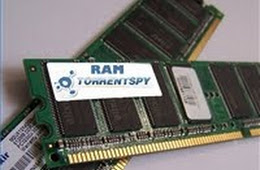- Check the owner's manual or motherboard manual to determine if RAM is parity or non-parity. The website of the company you purchased the computer from usually will tell you what kind of memory your computer needs as well.
- Find out the speed of RAM (for example, 60 nanoseconds).
- Determine whether the computer uses single in-line memory modules (SIMMs) or dual in-line memory modules (DIMMs).
- Find out whether the computer uses regular, FPM, EDO, or Synch DRAM.
- Determine the number of pins on the motherboard: 30, 72 or 168.
- Remove the cover from the machine to find the number of open RAM slots. Look for between two and eight same-sized parallel sockets on the main circuit board. Usually at least two of those sockets will contain RAM - ruler-shaped circuit boards with chips on one or both sides.
- Purchase additional RAM that matches existing memory specifications.
- See the Related eHow "How to Install RAM" to learn how to put in RAM yourself; you can also get it installed (recommended if you don't feel comfortable opening up your computer case).
Sign up here with your email

.jpg)



ConversionConversion EmoticonEmoticon